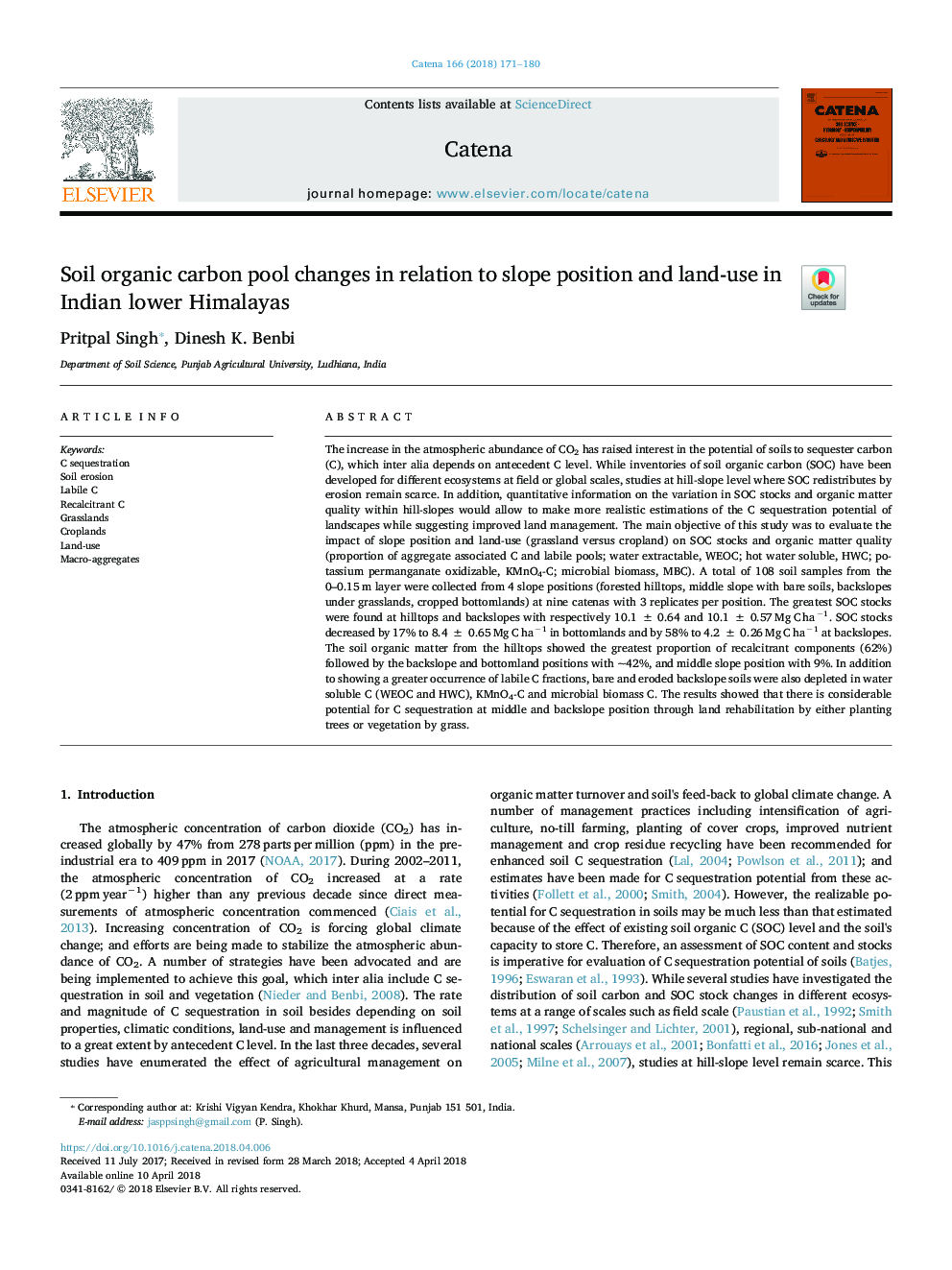| کد مقاله | کد نشریه | سال انتشار | مقاله انگلیسی | نسخه تمام متن |
|---|---|---|---|---|
| 8893536 | 1629188 | 2018 | 10 صفحه PDF | دانلود رایگان |
عنوان انگلیسی مقاله ISI
Soil organic carbon pool changes in relation to slope position and land-use in Indian lower Himalayas
ترجمه فارسی عنوان
استخر کربن آلاینده خاک در ارتباط با موقعیت شیب و استفاده زمین در هیمالیا هند پایین
دانلود مقاله + سفارش ترجمه
دانلود مقاله ISI انگلیسی
رایگان برای ایرانیان
کلمات کلیدی
موضوعات مرتبط
مهندسی و علوم پایه
علوم زمین و سیارات
فرآیندهای سطح زمین
چکیده انگلیسی
The increase in the atmospheric abundance of CO2 has raised interest in the potential of soils to sequester carbon (C), which inter alia depends on antecedent C level. While inventories of soil organic carbon (SOC) have been developed for different ecosystems at field or global scales, studies at hill-slope level where SOC redistributes by erosion remain scarce. In addition, quantitative information on the variation in SOC stocks and organic matter quality within hill-slopes would allow to make more realistic estimations of the C sequestration potential of landscapes while suggesting improved land management. The main objective of this study was to evaluate the impact of slope position and land-use (grassland versus cropland) on SOC stocks and organic matter quality (proportion of aggregate associated C and labile pools; water extractable, WEOC; hot water soluble, HWC; potassium permanganate oxidizable, KMnO4-C; microbial biomass, MBC). A total of 108 soil samples from the 0-0.15â¯m layer were collected from 4 slope positions (forested hilltops, middle slope with bare soils, backslopes under grasslands, cropped bottomlands) at nine catenas with 3 replicates per position. The greatest SOC stocks were found at hilltops and backslopes with respectively 10.1â¯Â±â¯0.64 and 10.1â¯Â±â¯0.57â¯Mgâ¯Câ¯haâ1. SOC stocks decreased by 17% to 8.4â¯Â±â¯0.65â¯Mgâ¯Câ¯haâ1 in bottomlands and by 58% to 4.2â¯Â±â¯0.26â¯Mgâ¯Câ¯haâ1 at backslopes. The soil organic matter from the hilltops showed the greatest proportion of recalcitrant components (62%) followed by the backslope and bottomland positions with ~42%, and middle slope position with 9%. In addition to showing a greater occurrence of labile C fractions, bare and eroded backslope soils were also depleted in water soluble C (WEOC and HWC), KMnO4-C and microbial biomass C. The results showed that there is considerable potential for C sequestration at middle and backslope position through land rehabilitation by either planting trees or vegetation by grass.
ناشر
Database: Elsevier - ScienceDirect (ساینس دایرکت)
Journal: CATENA - Volume 166, July 2018, Pages 171-180
Journal: CATENA - Volume 166, July 2018, Pages 171-180
نویسندگان
Pritpal Singh, Dinesh K. Benbi,
